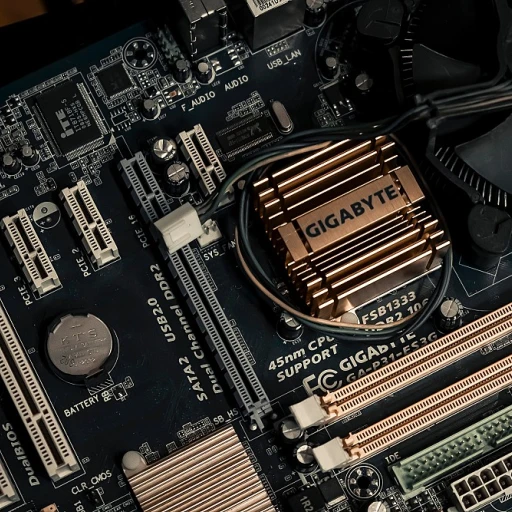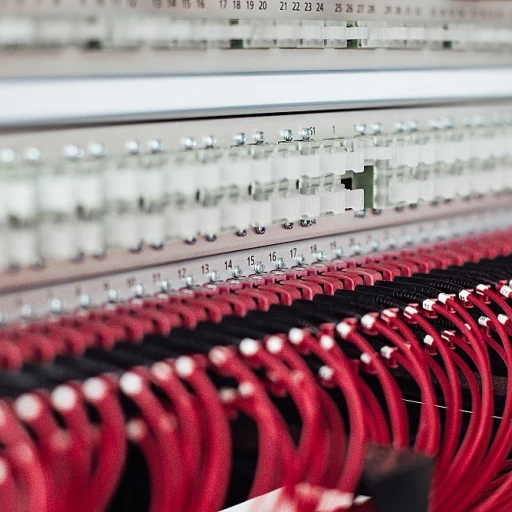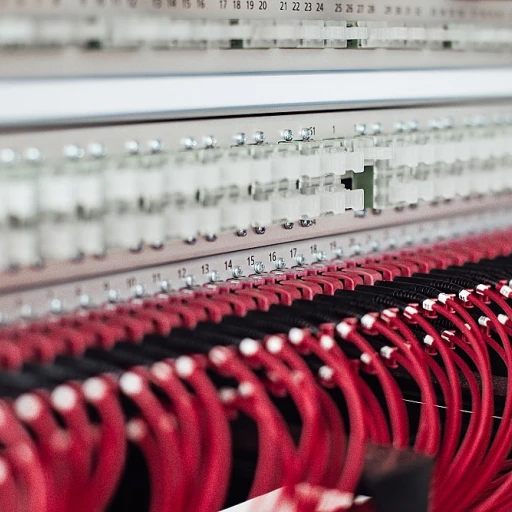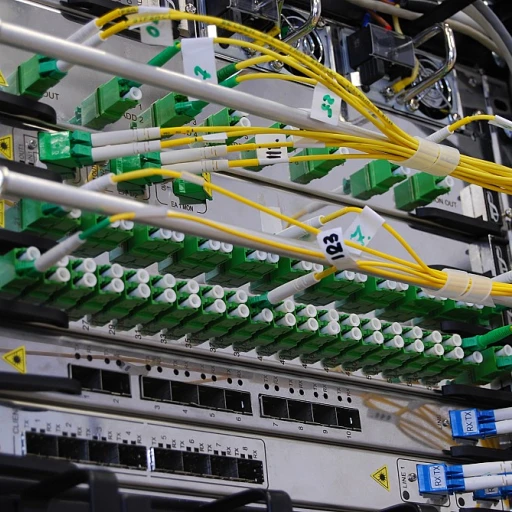
Understanding Digital Fault Recorders
Exploring the Core of Digital Fault Recorders
Digital Fault Recorders (DFRs) are pivotal in modern power systems, serving as essential tools for capturing and analyzing disturbances. These devices are integral to maintaining power quality and ensuring the reliability of power supply by monitoring and recording transient faults and sequence events in real time. As the demand for efficient power systems grows, the role of DFRs becomes increasingly significant.
DFRs operate by capturing fault records and disturbance data, which are crucial for understanding the dynamics of power systems. They provide detailed insights into power system behavior during faults, enabling engineers to perform thorough analysis and implement corrective measures. The data recorded by DFRs is invaluable for enhancing system reliability and optimizing performance.
In the current market, the growth of DFR technology is driven by the increasing demand for reliable power supply and the integration of renewable energy sources. The ability of DFRs to provide real-time monitoring and high sampling rates makes them indispensable in modern power grids. As the market continues to expand, the value of DFRs is projected to reach several USD billion, reflecting their critical role in power system management.
For those interested in deepening their understanding of digital fault recording and its applications, enhancing your knowledge with a cyber security quiz can provide additional insights into the technological advancements and challenges faced in this field.
Integration with Modern Software Systems
Seamless Integration with Modern Software Systems
The integration of digital fault recorders (DFRs) into modern software systems is a pivotal step in enhancing the reliability and efficiency of power systems. As the demand for real-time data analysis and monitoring grows, the need for sophisticated recording systems becomes more apparent. DFRs play a crucial role in capturing transient faults and disturbances, providing invaluable insights into power quality and system performance.
Incorporating DFR technology into existing systems requires a strategic approach. The compatibility of DFRs with current software architectures ensures that fault records and sequence events are accurately captured and analyzed. This integration not only aids in disturbance recording but also supports the overall growth of the recorder market, which is projected to reach significant USD billion figures in the coming years.
Moreover, the increasing demand for renewable energy sources necessitates advanced monitoring solutions. DFRs, with their high sampling rates and real-time recording capabilities, are essential for maintaining the stability of the power grid. By providing detailed records of power supply fluctuations and faults, these systems enable operators to make informed decisions and implement timely interventions.
For organizations looking to enhance their power system monitoring capabilities, hiring Azure developers can be a strategic move. These professionals bring expertise in cloud-based solutions, facilitating the seamless integration of DFRs into digital infrastructures. This approach not only optimizes the performance of recording systems but also aligns with the broader trends in digital transformation.
As the market for digital fault recorders continues to expand, the focus on integrating these systems with modern software solutions will remain a priority. By leveraging advanced technology and expert insights, organizations can ensure the reliability and efficiency of their power systems, paving the way for sustainable growth and innovation.
Enhancing Software Reliability
Boosting Software Stability with Digital Fault Recorders
In the realm of software development, ensuring reliability is paramount. Digital fault recorders (DFRs) play a crucial role in enhancing the stability and reliability of software systems. By meticulously capturing and analyzing fault data, these recorders provide invaluable insights into power system disturbances and transient faults, allowing developers to address issues proactively.
DFRs are integral to monitoring power quality and maintaining the integrity of power systems. They record sequence events and disturbances in real time, offering a comprehensive view of the system's performance. This data-driven approach enables developers to identify patterns and potential vulnerabilities within the software, facilitating timely interventions and minimizing downtime.
The increasing demand for renewable energy sources has further underscored the importance of robust fault recording systems. As the power grid evolves, the need for advanced monitoring and analysis tools becomes more pronounced. DFRs, with their high sampling rates and precise recording capabilities, are at the forefront of this technological shift, ensuring that software systems can adapt to the dynamic nature of modern power supply networks.
Moreover, the integration of DFR technology into existing software systems is a testament to its growing market significance. As the recorder market continues to expand, with projections reaching several USD billion, the emphasis on enhancing software reliability through advanced fault analysis will only intensify. This growth is driven by the increasing complexity of power systems and the critical need for reliable digital fault recording solutions.
For those interested in exploring the potential of headless CMS solutions in enhancing software reliability, this article provides valuable insights into how innovative technologies can bolster system stability.
Challenges in Implementing Digital Fault Recorders
Overcoming Barriers in Digital Fault Recorder Implementation
Implementing digital fault recorders (DFRs) in modern power systems presents several challenges that can hinder their effectiveness. These challenges often stem from the complexity of integrating DFR technology with existing systems and the need for real-time data analysis. As the demand for reliable power supply and quality monitoring increases, addressing these obstacles becomes crucial.
One of the primary challenges is the integration with legacy systems. Many power grids still rely on outdated infrastructure, making it difficult to incorporate advanced digital fault recording systems seamlessly. This integration requires significant investment in both time and resources, as well as a thorough understanding of the existing power system architecture.
Another significant hurdle is the management of vast amounts of data generated by DFRs. These devices continuously monitor power systems, capturing transient faults and disturbances in real-time. The sheer volume of data can overwhelm existing data management systems, necessitating robust data analysis tools to extract meaningful insights from fault records.
Additionally, the market growth of DFR technology is constrained by the high costs associated with their deployment. The initial investment in digital fault recorders and the necessary infrastructure upgrades can be substantial, often reaching into the USD billions. This financial barrier can deter smaller utilities and power companies from adopting this technology, despite its potential benefits in enhancing power quality and system reliability.
Furthermore, the need for skilled personnel to operate and maintain these systems cannot be overlooked. As DFR technology evolves, there is an increasing demand for professionals who are well-versed in both the technical and analytical aspects of fault recording and power system monitoring.
Lastly, the sampling rate of DFRs must be carefully calibrated to ensure accurate disturbance recording. Inadequate sampling rates can lead to incomplete or inaccurate fault records, compromising the reliability of the entire system. As power systems become more complex with the integration of renewable energy sources, ensuring precise fault recording becomes even more critical.
Addressing these challenges requires a strategic approach that combines technological innovation with practical solutions. By investing in advanced DFR systems and fostering a skilled workforce, the power industry can overcome these barriers and harness the full potential of digital fault recording technology.
Future Trends in Digital Fault Recording
Emerging Technologies and Their Impact
The future of digital fault recording is closely tied to advancements in technology. As power systems become more complex, the demand for sophisticated digital fault recorders (DFRs) is increasing. These devices are crucial for monitoring and analyzing power quality and disturbances in real time. With the integration of renewable energy sources, the need for precise fault recording and analysis has never been more critical.
Market Growth and Economic Factors
The global market for digital fault recorders is projected to experience significant growth. This growth is driven by the increasing demand for reliable power supply systems and the need to enhance power quality. According to industry reports, the DFR market is expected to reach several USD billion in the coming years. This expansion is fueled by technological advancements and the rising adoption of smart grid systems.
Advancements in Data Analysis and Monitoring
As digital fault recorders evolve, their ability to process and analyze data in real time is improving. This advancement allows for better monitoring of power systems and quicker identification of transient faults and disturbances. The integration of advanced data analysis tools enhances the reliability of power systems by providing detailed fault records and sequence events analysis.
Challenges and Opportunities
While the future of digital fault recording is promising, there are challenges to address. Implementing these systems requires significant investment and technical expertise. Additionally, ensuring compatibility with existing power systems and maintaining high sampling rates are ongoing concerns. However, these challenges present opportunities for innovation and growth in the recorder market.
Conclusion
In summary, the future of digital fault recorders is bright, with numerous opportunities for growth and innovation. As technology advances, these systems will play an increasingly vital role in ensuring the reliability and efficiency of power systems worldwide.
Case Studies and Real-World Applications
Real-World Applications of Digital Fault Recorders
Digital fault recorders (DFRs) have become indispensable in modern power systems, offering a robust solution for monitoring and analyzing power quality and disturbances. Their application spans across various sectors, each leveraging the technology to enhance system reliability and efficiency.
Power Grid Monitoring
In the realm of power grids, DFRs play a crucial role in disturbance recording and analysis. By capturing transient faults and sequence events, these recorders provide valuable data that helps in understanding system behavior during faults. This information is vital for improving grid stability and preventing future disturbances.
Renewable Energy Integration
As the world shifts towards renewable energy sources, the need for reliable fault recording systems becomes more pronounced. DFRs are instrumental in managing the complexities of integrating renewable energy into existing power systems. They ensure that power quality is maintained and that any faults are quickly identified and addressed, facilitating smoother transitions and operations.
Industrial Applications
Industries with critical power supply needs, such as manufacturing and data centers, utilize DFRs to monitor and maintain power quality. By analyzing fault records and power disturbances in real time, these industries can prevent costly downtime and enhance operational efficiency.
Market Growth and Future Prospects
The DFR market is experiencing significant growth, driven by the increasing demand for reliable power systems and the integration of advanced technologies. As the market expands, innovations in sampling rate and data analysis are expected to further enhance the capabilities of digital fault recorders, making them an even more integral part of power system management.















